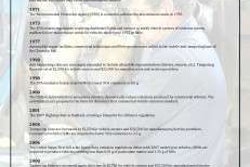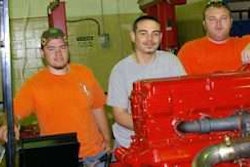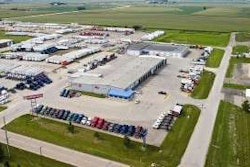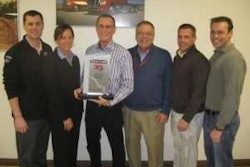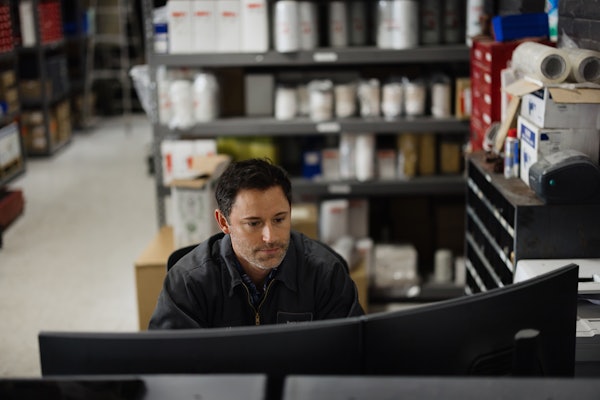Hard as it may be to hear, you can’t run your business forever.
At some point there will be a time where you’ll want (or need) to step aside, and when that day comes, you’ll need to be prepared. Turning over leadership in a business is not a simple task. It requires years of careful preparation.
It requires a succession plan.
A succession plan is a detailed business strategy that identifies potential leadership successors within a business and positions them to lead while also slowly transitioning out existing leadership over a certain time period.
Also designed to streamline the transition process, a succession plan ensures a strong business leaving one owner’s hands remains a strong business under the next owner.
That aspect makes succession planning extremely useful when passing on a business in the heavy-duty dealer market.
You don’t want your business to lose value the instant your child or a long-time employee take control.
Earlier this year Successful Dealer sat down with Keith Ely, managing partner at KEA Advisors and CliftonLarsonAllen’s Scott Gorden, managing principal – dealerships and Scott Strothkamp, principal – dealerships, for a pair of in-depth discussions on this topic.
Below are their thoughts on building a succession plan for a commercial vehicle dealership.
When should a dealer principal begin succession planning?
Keith Ely: “I don’t think there is a magic number, or a specific date. The longer the better. You have to give yourself time to do everything properly.
“A succession plan can’t be hidden from your leadership team. If you decide you want to step away in X number of years, you need to communicate that to them, and form your plan with them. They need to know you’re starting to go down that road … There are a lot of dealers who have key employees who are the same age as them, and they might be thinking about retiring at the same time.
“You have to know where everyone else will be during your transition.”
Scott Strothkamp: “You want your team to know when you plan on stepping down and what your initial thoughts are regarding your replacement. You may have to train key employees to work with [your successor] and that takes time.
“When you turn over the reins from a 65 year old to a 45 year old, your employees might not see that person in the same vein as the patriarch. And if they don’t respect them that can end up harming the organization.”
Scott Gorden: “Most dealers do a really good job of building a team around them. But as those dealers transition out, a lot of their departmental managers are transitioning out at the same time. If multiple leaders all leave in a short period of time that can be a pretty good shock to the culture of a business.
“A good plan should help the business prepare for that.”
Does a dealer principal need a succession plan if they intend to sell their operation?
KE: “There certainly needs to be a strategy to do it … when you decide to sell you’re certainly not ready at that moment. I think if you want to exit the business you should start preparing five years out to maximize the value of the business and what you can control.
“You can increase your profitability by strengthening the entire business and maximizing its value.”
SG: “The value of the business is definitely higher if you have the key people in place to run the business. If you have that when you decide you want to sell, it’s a matter of keeping it in place. If you don’t, it’s something to change.
“A strong business culture and leadership are really important to the value of the operation.”
SS: “You want to make your business enticing. If someone comes to you to buy your dealership you’re going to get a higher value than if you go to them.”
What is the first step in succession planning?
KE: “I don’t think you can look for somebody else [to succeed you] until you know you want to exit. You have to accept you’re going to walk away.”
SS: “I think the biggest step for dealers is just [accepting] the emotional component of not being the person in charge any more. The fear of ‘OK, what do I do now?’ There is an emotional attachment to what you’ve done over the years in building the business; it can be tough for guys to step away from that.
“Once a dealer principal comes to grips with that, the rest is more of a process and much more finance oriented.”
SG: “That’s when you start looking for the next generation. In a lot of cases you’ll see dealers start by looking at their family and seeing if a family member could be groomed to take over in the future. Some guys also will look at their employees and management team.
“If they don’t find someone else who can take over the business, or if they aren’t comfortable putting their most valuable asset in someone else’s hands, that’s when they might look at the outside market and what they need to do to sell it.”
How should a dealer principal communicate the succession plan to the successor?
SS: “From my experience it helps if the successor, the son or daughter, has already been involved in the business. Then they have an idea of whether or not they’d like to take over.
“I don’t think there has to be one meeting where [the succession plan] is addressed. I think it works best if it’s a slow discussion that happens over time and evolves to that point … When the final decision is made it doesn’t have to happen on a specific date, but when it does happen the exit strategy should become more definite.”
KE: “The ones I’ve seen that have not worked so well are when the dealer principal tells the younger person ‘You will be in charge by this time or date.’ There is never a conversation about if [the young person] wants to go down that road, and if so how they believe it should be handled.”
How should a dealer principal communicate the succession plan to his employees and OEM?
SS: “From the OEM standpoint that should be one of your early steps. You have to make sure the OEM approves of the next person on that franchise agreement.
“When you decide you’re going to step down you’re going to communicate that to your top management pretty fast and you should tell them about your successor. They should be involved in your [succession] planning. But with most dealerships today word gets around, so your people will probably be aware of [your intentions] before you announce them.”
SG: “I think what you see with these second- or third-generation family businesses is the child starts taking over more and more of the day-to-day responsibilities. Sometimes you don’t even need to have that formal conversation with your team. One generation phases down and another phases up. Then when the announcement is made, everyone understands and knows how to proceed.
“As dealers age … they appreciate being able to step back and the business doesn’t miss a beat.”
How long should a successor have to learn a business before being given control?
KE: “I think that while it’s important for the successor to understand the business, it also matters where that person is in their life — and if they are prepared to lead and know what to do. A 30 year old who has worked in all areas of the business for 15 years should be viewed differently than a 45 year old who has no experience [in the dealership] but has tremendous business experience … Those are different situations but both can be very effective.
“I think for an internal or external successor, all of this is incumbent on how the previous dealer principal built a leadership team around [the new person]. I think one thing the (ATD) Dealer Academy does a really good job of is showing dealers what that team should look like.”
SS: “I don’t think there’s a set time, but I think varied experiences help. If a successor has knowledge of how other companies work they can bring in new thought processes and innovation. They come in from a different world, with different life experiences and they can see more than one way to run the business. It’s good to have that.”
SG: “I think for any next generation coming into a leadership role it makes a lot of sense for them to gain experience outside of the family’s dealership for a period of time. If their last name is Gorden and the name on the sign out front is Gorden that carries a lot of weight. They can be put on a pedestal within the organization before they’ve even done anything; even if that’s something they don’t want.
“One thing we see in this industry is dealer principals will swap sons, with each son going to work for the other father’s dealership for two to three years as a way of letting the children understand what really goes into running a business … They are able to work in an environment where they’re just like everyone else, and then when they come back to the family business they have proven they are capable of doing the job.”
This is Part I of our two-part discussion with KEA Advisors and CliftonLarsonAllen on dealer succession planning. For Part II, CLICK HERE.

